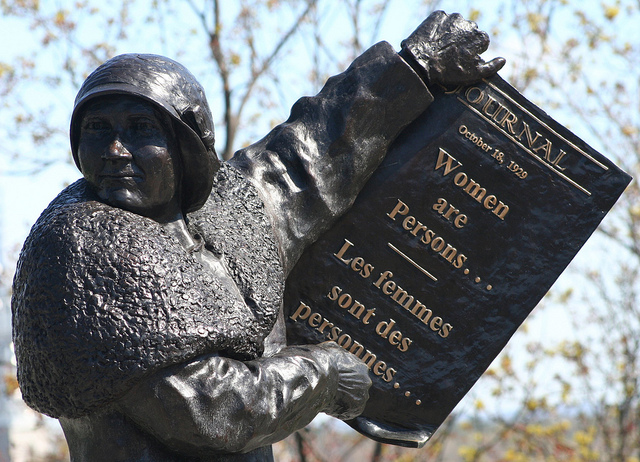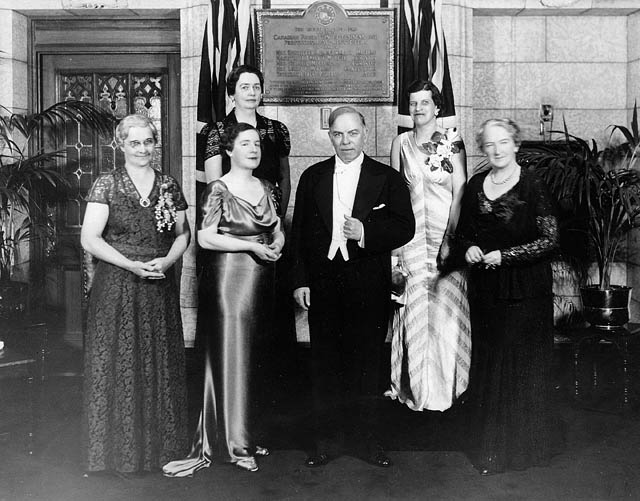

The Famous Five, Nellie McClung statue by Douglas Sprott [CC BY-NC 2.0(https://creativecommons.org/licenses/by-nc/2.0/)]
Edwards is the last of the so-called ‘persons’ cases. In these women argued, that they, like men, were persons and therefore entitled to the same rights as men. In Edwards the Judicial Committee of the Privy Council agreed.
‘During those sixty years various women’s campaign groups protested; lobbied politicians to introduce legislation; brought legal challenges and organised themselves to fight for greater equality … The persons cases demonstrate how women needed to adopt all three forms of action’.
Sarah Mercer

Unveiling Plaque to Valiant Five by Rt. Hon. W.L. Mackenzie King by Eugene M Finn (11 June 1938, no. 3535150) from Library and Archives Canada
The full version of this landmark was written by Sarah Mercer.
Learn More
Famou5 Foundation, ‘The Famous Five: The Women’ http://www.famou5.ca/the-famous-five-women/
First Women in Canadian Politics http://herstory-canada.tumblr.com
Historica Canada, ‘Persons Case’ http://www.thecanadianencyclopedia.ca/en/article/persons-case/